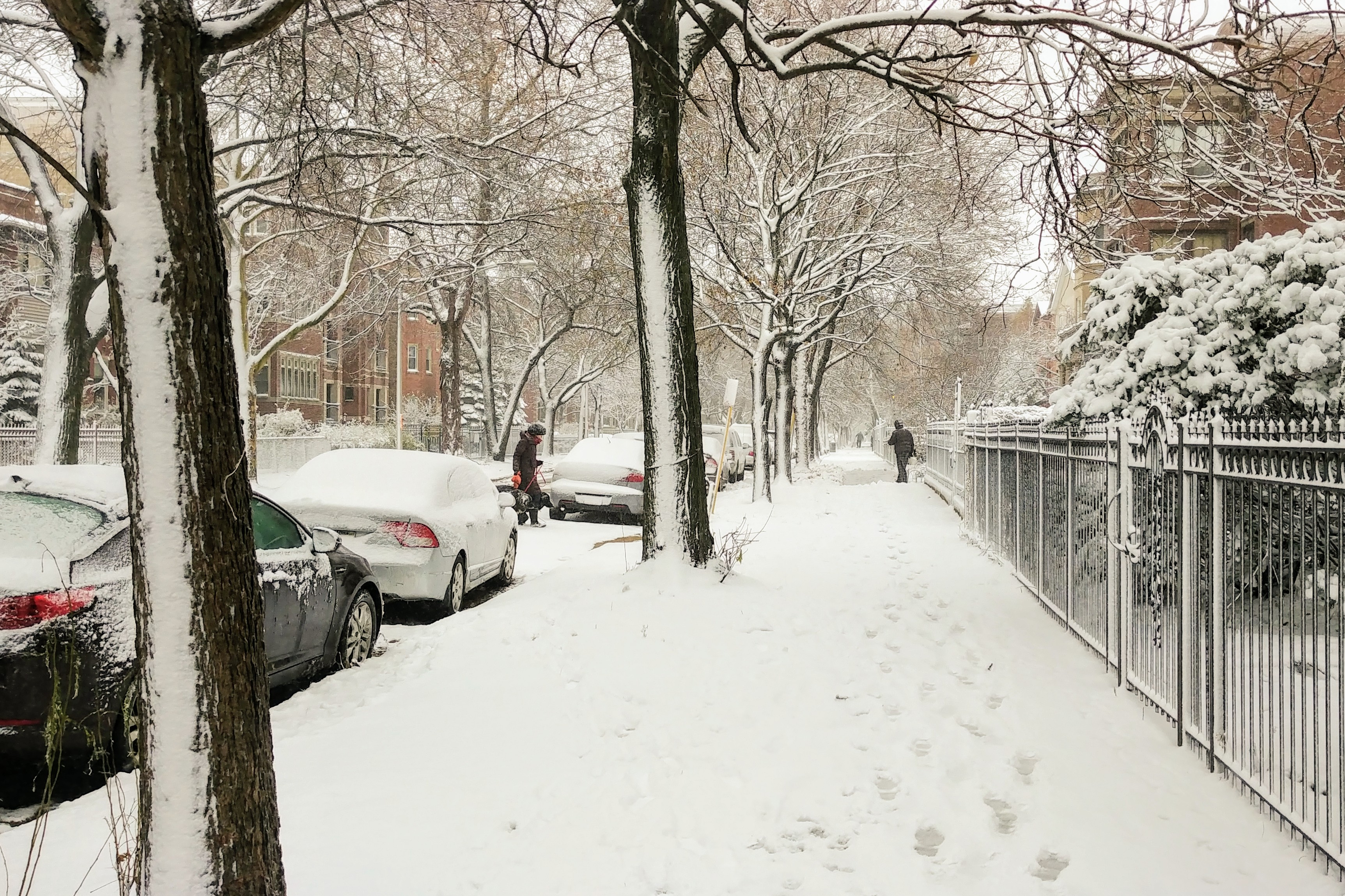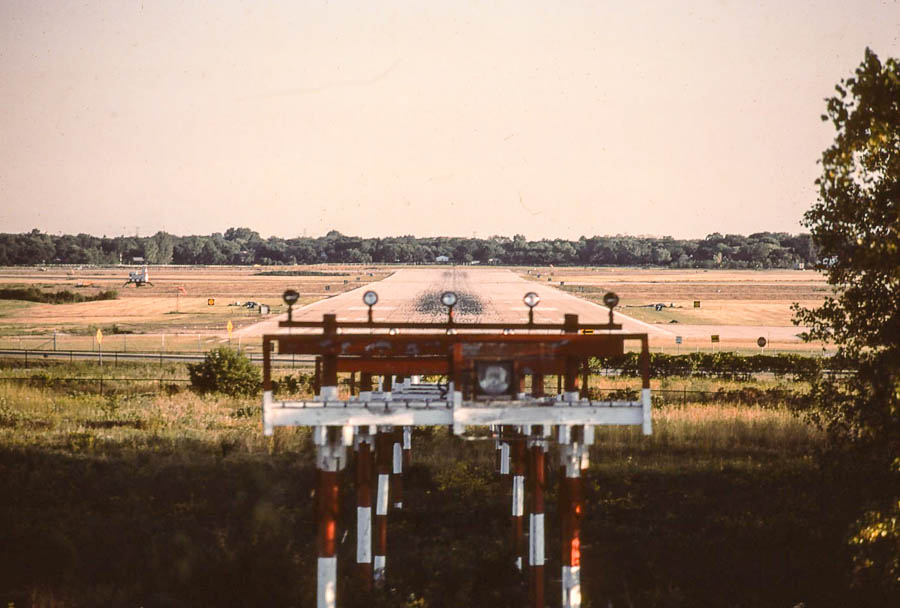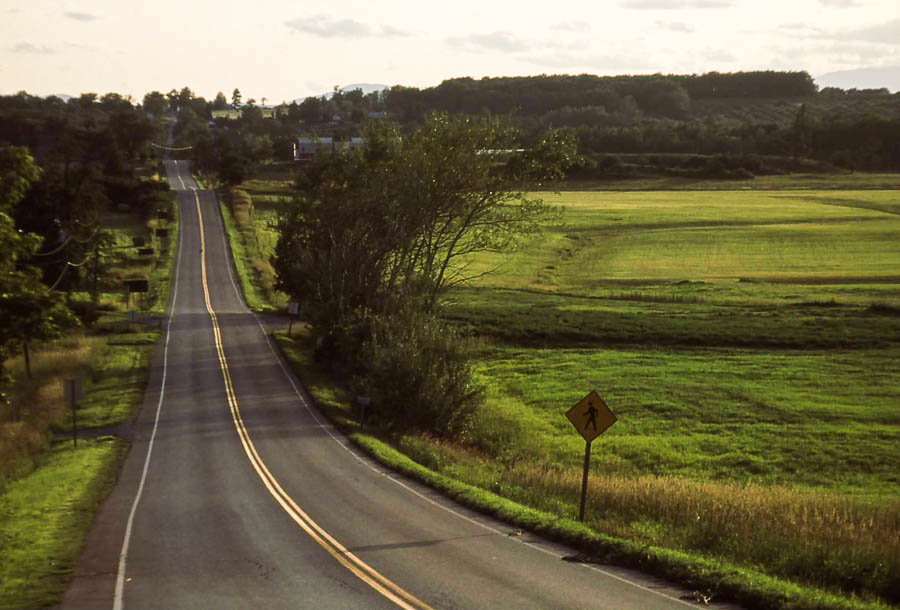Yesterday, a combination of moisture and cold caused snow to fall in a singularly odd pattern near Chicago:
Although no widespread weather systems were in the area to crank out snow, flurries were still falling across parts of the area.
These unusual phenomena were thanks to a supercooled atmosphere interacting with exhaust from a power plant and also the air flow around commercial aircraft.
Farther to the north, a bizarre radar signature in the shape of a loop showed up just northeast of the Windy City, out over Lake Michigan. It turns out this dash of winter was caused by aircraft landing at O'Hare International Airport.
Observations from the airport at the time reveal a temperature of 22 degrees and a dew point of 17 degrees, both well below freezing. Additionally, the closeness of the temperature to the dew point meant the air was near saturation. There was 82 percent relative humidity at the time.
It's likely that supercooled water droplets were present in this air mass. That means the water vapor was below freezing but couldn't entirely transition into ice crystals because of a lack of particulates upon which to freeze.
In this case, though, an aircraft - or many aircraft - passed through this layer.
Meanwhile, police and firefighters closed streets around tall buildings in downtown Chicago yesterday as chunks of ice came crashing down on them. (On the streets, not the firefighters.) You can imagine the commute.
CityLab just alerted me to a card game that I am going to order as soon as I finish this post:
The nail-biting drama of rush-hour congestion, shuttle bus transfers, and airport mix-ups—now in a deck of cards: It’s LOOP: The Elevated Card Game, developed by Chicago merchandiser Transit Tees. The game draws on the relatable pleasures and perils of using the Windy City’s elevated rapid-transit network, the venerable L; it’s a love letter to the joys of public transit, as well as an opportunity to mocking its abundant annoyances.
The gameplay is similar to UNO or Crazy Eights, but instead of matching numbers, suites, or colors, players match the L line or station. For example, if the top of the pile is a Brown Line card for the Washington/Wells station, you can play any other Brown Line, or another Washington/Wells card (as if you’re transferring lines in real life). The object of the game is to get rid of all of your cards first. The player who most recently used public transportation gets to deal.
Yah, total Daily Parker bait. There seems to be a lot of that lately.
New research suggests that men insecure about their masculinity tend to support the president more. No, really:
We found that support for Trump in the 2016 election was higher in areas that had more searches for topics such as “erectile dysfunction.” Moreover, this relationship persisted after accounting for demographic attributes in media markets, such as education levels and racial composition, as well as searches for topics unrelated to fragile masculinity, such as “breast augmentation” and “menopause.”
In contrast, fragile masculinity was not associated with support for Mitt Romney in 2012 or support for John McCain in 2008 — suggesting that the correlation of fragile masculinity and voting in presidential elections was distinctively stronger in 2016.
The same finding emerged in 2018. We estimated levels of fragile masculinity in every U.S. congressional district based on levels in the media markets with which districts overlap.
[I]t remains to be seen whether any link between fragile masculinity and voting will persist after Trump exits the national stage. We suspect, however, that Trump’s re-engineering of the GOP as a party inextricably tied to many Americans’ identity concerns — whether based on race, religion or gender — will ensure that fragile masculinity remains a force in politics.
Again, it's not the size of the correlation that matters, it's how we use the data.
CityLab describes new Daily Parker bait:
When a new rail or bus line gets built in the United States, its mere opening is often cause for celebration among transit advocates. That’s understandable, given the funding gaps and political opposition that often stymie projects.
But not all trains are bound for glory, and it’s often not hard to see why. In the new book, Trains, Buses, People: An Opinionated Atlas of U.S. Transit (Island Press, $40), Christof Spieler, a Houston-based transit planner, advocate, and former METRO board member, takes stock of the state of American transit with a tough-love approach. In nearly 250 pages of full-color maps, charts, and encyclopedia-style entries, Spieler profiles the 47 American metropolitan regions that have rail or bus rapid transit to show what works, what doesn’t, and why.
But a dunk-fest this is not. Spieler highlights several examples of cities that are often commonly described as transit failures, but where the data tells another story. “Though Los Angeles’ first rail system was gone by 1963, it left a city that is still friendly to transit,” he writes of the iconically car-oriented city. And who knew that Buffalo, New York, and Fort Collins, Colorado, have transit systems to admire? The former may have the shortest and most oddly configured light-rail system in the country, but as it turns out, “Metro Rail outperforms most of the light-rail lines in the United States,” Spieler writes. (It’s also laden with glorious public art, as CityLab’s Mark Byrnes recently noted.) And Fort Collins has top-quality BRT for its size.
So, do I waive the rule against buying more books until half of this shelf is empty? Or do I hold fast and get this book when it goes paperback in a year or two?
With Chicago Mayor Rahm Emanuel retiring this spring, we now have 21—count 'em, 21—people running to replace him:
For now, the list of 21 candidates includes: state Comptroller Susana Mendoza, Cook County Board President Toni Preckwinkle, Cook County Circuit Court Clerk Dorothy Brown, state Rep. LaShawn Ford, former U.S. Commerce Secretary Bill Daley, City Hall veteran and attorney Gery Chico, former Chicago police Superintendent Garry McCarthy, former Chicago Public Schools CEO Paul Vallas, former federal prosecutor Lori Lightfoot, businessman Willie Wilson, former Ald. Bob Fioretti, tech entrepreneur Neal Sales-Griffin, Southwest Side attorney Jerry Joyce, activist Ja’Mal Green, Austin Chamber of Commerce Director Amara Enyia and attorney John Kozlar.
Five other individuals submitted petitions but have not created official campaign committees with the state, did not have a campaign website or had not raised any money, all measurements of a campaign’s viability. Historically, such candidates often do not make the ballot.
In 1995, Chicago began holding nonpartisan elections, with a general election in February and a runoff election in April between the top two finishers if no candidate wins more than 50 percent of the vote. In that era, the most candidates to appear on the ballot was six in the 2011 race to succeed retiring Mayor Richard M. Daley.
From 1901 to 1995, the city held partisan elections, with a primary in February and a general election in April. In that era, the most candidates to appear on a general election ballot was four in 1977, 1991 and 1995, according to the Chicago Board of Election Commissioners. City election officials said they could not say for certain the largest number of candidates to appear on a primary ballot from 1901 to 1995 without a trip to a warehouse to research election records.
Even with that caveat, 21 is likely the largest number to file for mayor since at least 1901, said Jim Allen, the election board’s spokesman.
Now I have to go read up on the 16 candidates who are actually running.
Overnight, a major blizzard hit Northern Illinois:
As of 7 a.m., 188 mm of snow was recorded at O'Hare International Airport, the city's official measuring station. Crystal Lake got 193 mm and some areas of McHenry County got 333 mm, according to the National Weather Service.
The north suburbs and southern Wisconsin bore the brunt of the storm. A winter storm warning remains in effect after blizzard warnings issued Sunday night expired early Monday morning.
It was the fifth-worst November blizzard in Chicago history, by snowfall amount. In my neighborhood, Parker's morning walk looked like this: 
As expected, Parker enjoys this more than I do.
Sometimes it's fun going through some stock shots and giving them another go with Lightroom.
Here's a digital photo from July 2004 that needed minimal tweaking:

This one needed lots of help, and unfortunately it probably needs another scan. I haven't checked the slide in a while; I hope the problems are with the scan (from 2009) and not with the slide (from 1984):

By the way, I took this photo here. Check out what that looks like today.
Finally, a slide that came out OK, though again it seems the scan leaves something to be desired. Middlebury, Vt., 28 July 1992:

I've been working on a personal project all day, except for walking Parker a couple of times, so I have largely avoided the drizzle and rain. Tonight, however, things will change:
The National Weather Service issued a blizzard warning for the Chicago metro area Sunday afternoon. The warning is in effect from 6 p.m. Sunday until 9 a.m. Monday.
Issuing a blizzard warning is not common, said National Weather Service meteorologist Ricky Castro.
“The last time we had one out for Cook County was in February 2015, and then the one before that was February 2011,” Castro said. “So it’s really not a common thing to have a blizzard warning around here, especially this time of year.”
At the height of the storm, more than 50 mm of snow an hour is possible, according to the weather service, combined with winds gusting 60 to 80 km/h. The far northwest suburbs could see about 300 mm of snow, according to the weather service, with 250 mm possible at O’Hare, 150 mm possible at Midway and then several inches likely for the immediate shoreline and downtown Chicago.
Oh, goody. Tomorrow's commute should be spectacular. Good thing we have public transit here.
We can all be thankful for things this Thanksgiving weekend, but few will be as thankful as Parker, who got his cone off yesterday:
